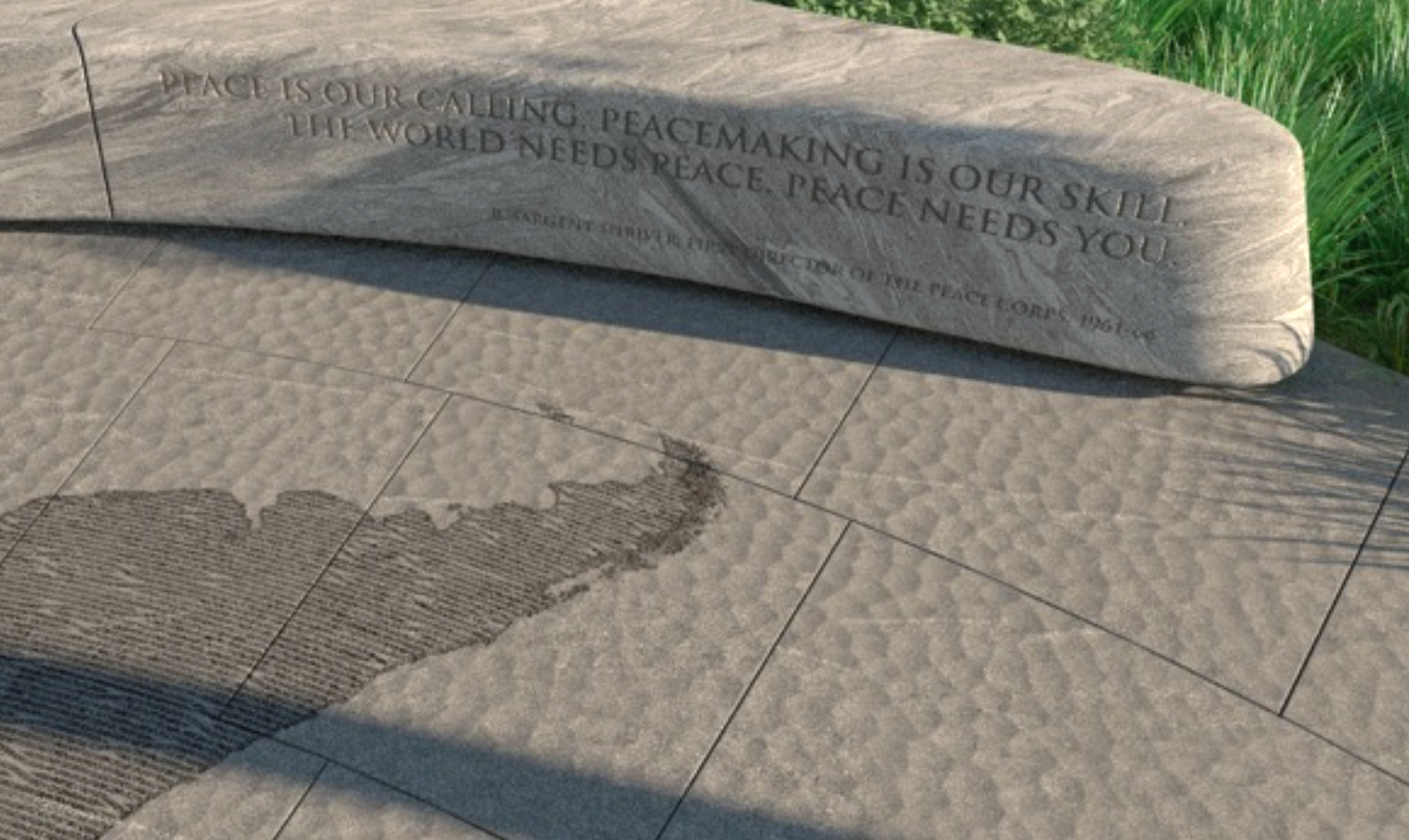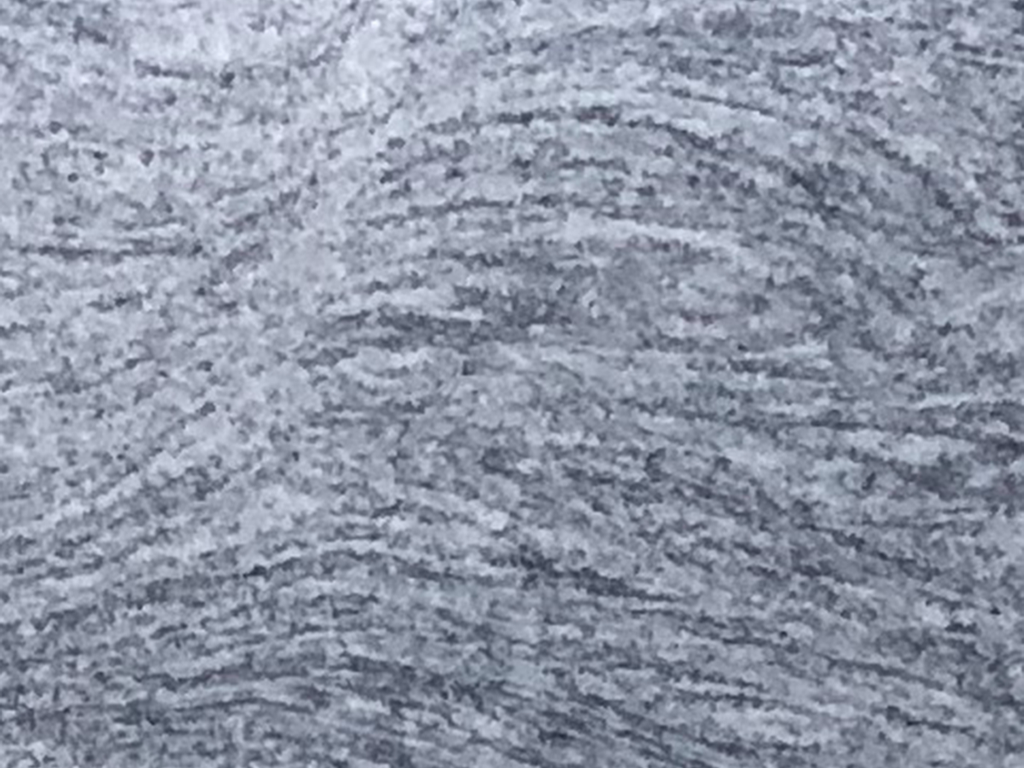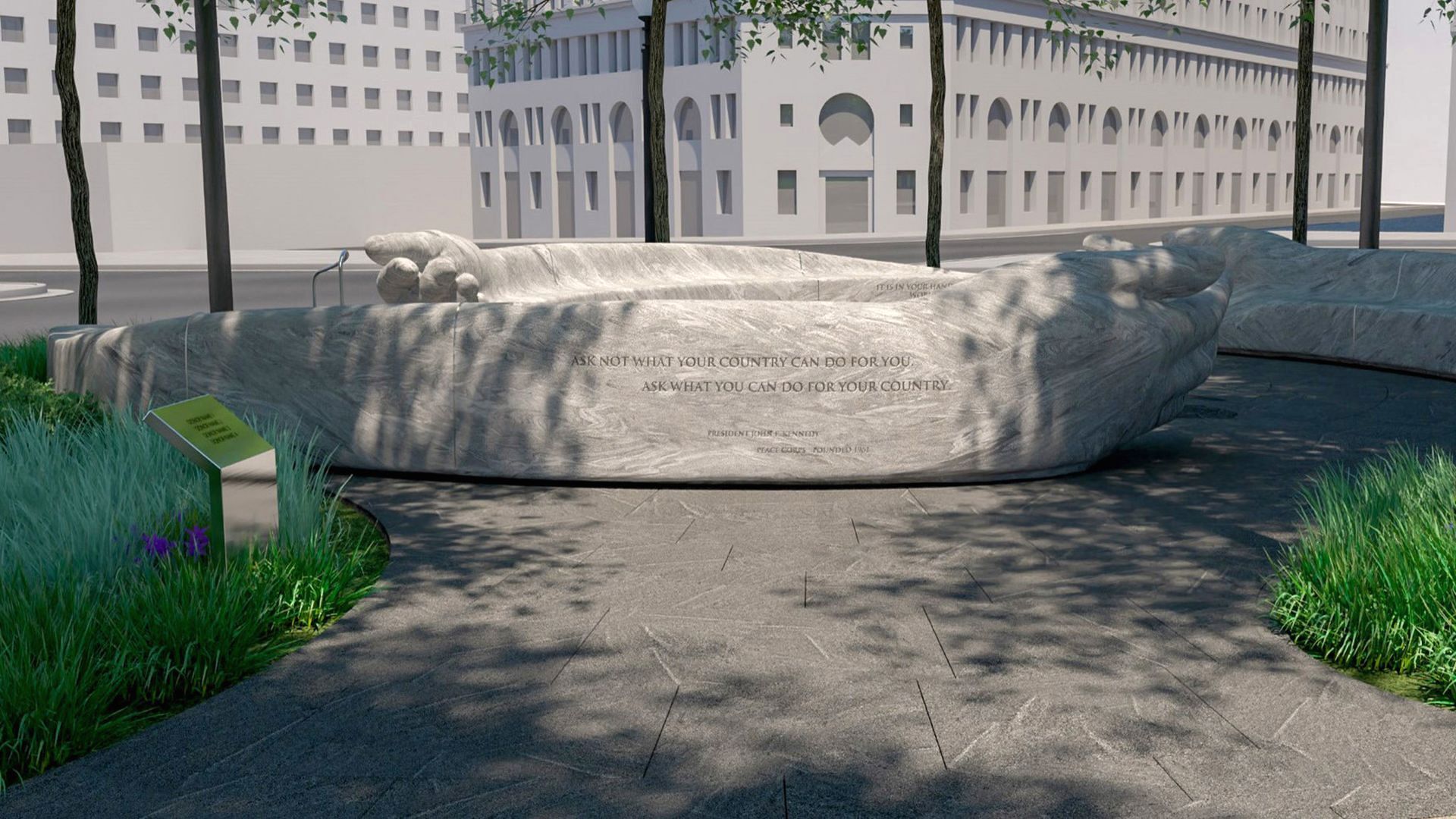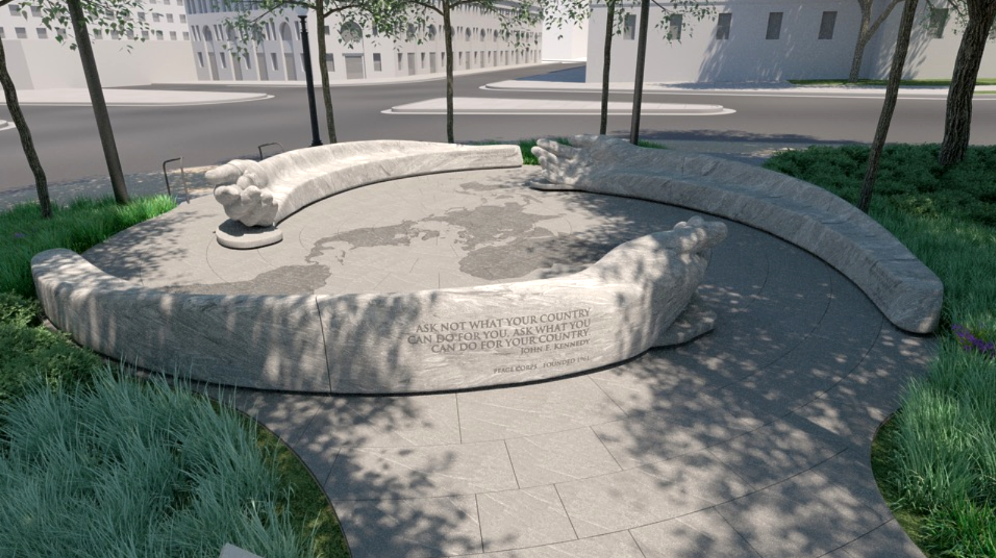DESIGN SPOTLIGHT
One World, Interconnected
Ours is not the first attraction in Washington, D.C. to feature a world map depicted in granite – visitors to the U.S. Navy Memorial see a world map depicted in its central plaza. There, a focus on the world’s oceans motivates a presentation using two types of stone, separated with inlaid metal borders.
But artist Larry Kirkland and his team designing Peace Corps Park are driven to represent one world, as accurately as possible, differentiating landforms and oceans with texture instead of borders and different types of granite.
When dealing with textured stone though, you must ensure that it’s safe to walk on, and accessible to visitors using wheelchairs or other mobility aids. To get technical, that all comes down to the “coefficient of friction” - essentially, how slippery the surface is. This means that the highly-polished granite that would give the best color contrast would not meet our requirements for accessibility for all visitors.
The solution from our design team is to sandblast a texture through a stencil, carving ⅛-inch grooves into a 1-inch thick leathered, honed granite base. The grooves intersect within the landmasses instead of conforming to political borders, reinforcing the idea of the shared world we all inhabit.
“Talking to Peace Corps Volunteers, it’s the one-to-one connections they make during their service that are the most meaningful and impactful. So by making those grooves cross occasionally, that increases the coefficient of friction while supporting the symbolic value,” Kirkland said in describing the approach.
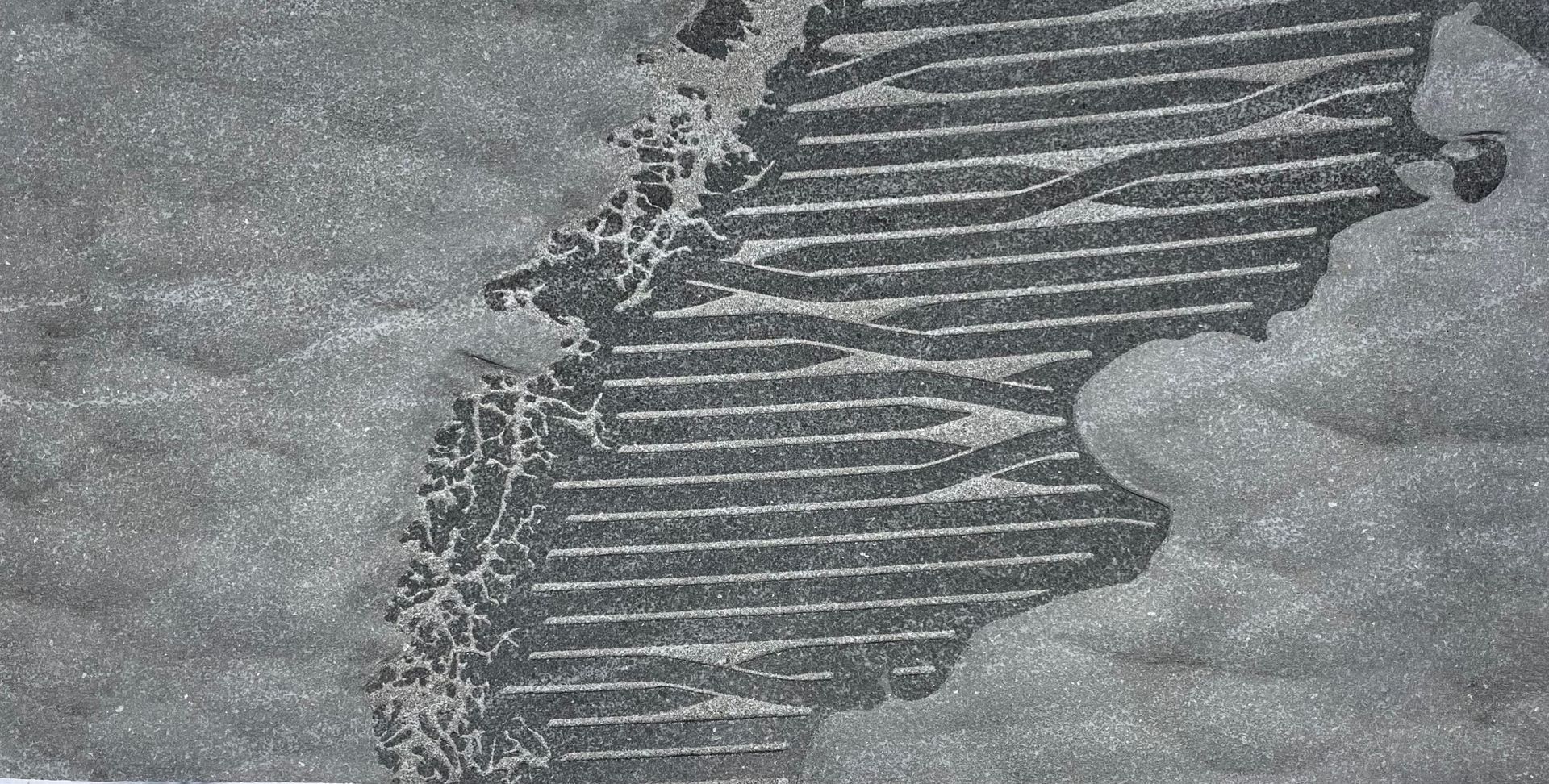
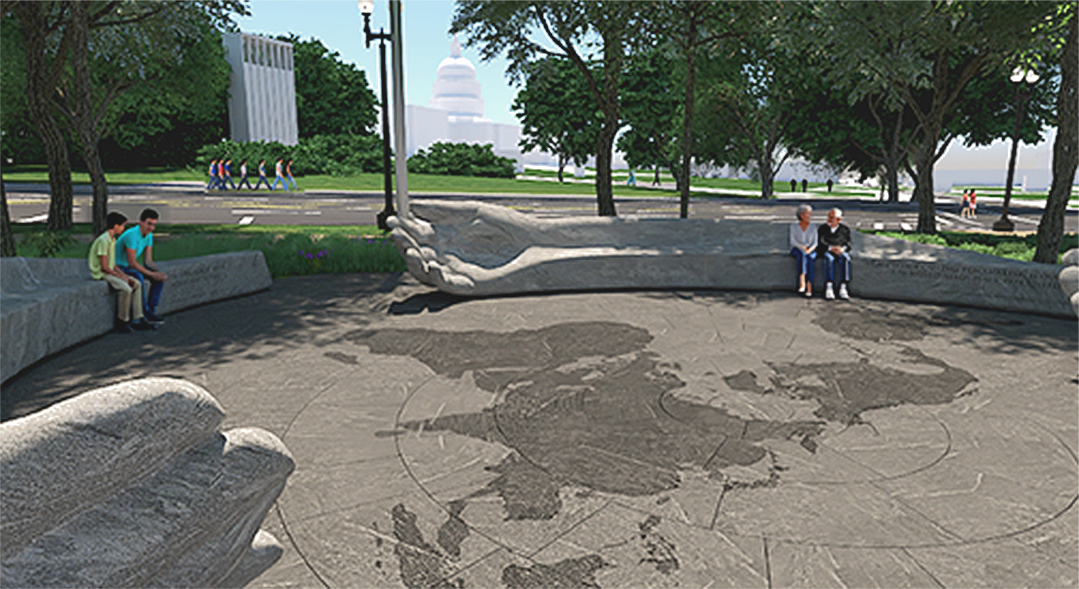
DESIGN SPOTLIGHT
Giving Shape to Water
Public works like Peace Corps Park, which will join the ranks of the National Park Service’s portfolio of commemorative installations in the nation’s capital, have a high bar to meet in both innovation and artistic expression. That was only one of the motivations to partner with renowned artist Larry Kirkland and his team of specialists in stone carving, landscaping, and managing the complexity of engineering public spaces like ours.
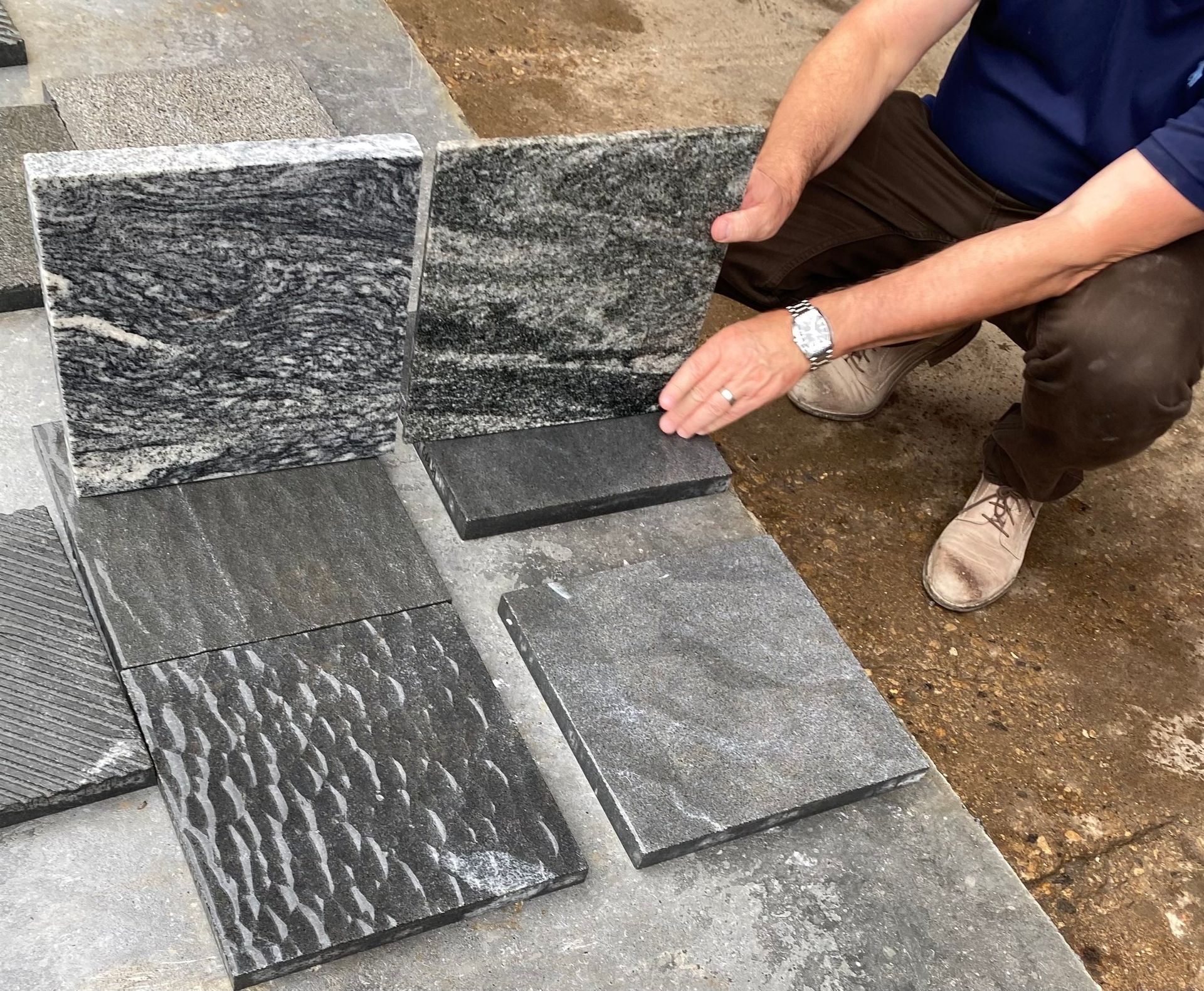
To maintain the symbolism of one connected world, Kirkland and his team have focused on using different textures and finishes to separate features, rather than inlaid borders or different types of granite. And any walking surfaces must be accessible for people using wheelchairs and other mobility aids and must not be dangerous for those wearing heels. On top of that, they must do everything they can to deter skateboarding.
Kirkland’s solution was inspired by work in other media. “I have seen images of wooden paneling that had been treated with an adze that I liked,” he said, referencing the organic pattern that emerges when carving away bits of the material’s surface. He shared the concept with his fabrication partner, who turned it into a 3-D pattern that their machinery can apply to the granite.
“We want something evocative of the water, but comfortable enough for people in high heels - at least as much as other surfaces in DC, like brick sidewalks and cobblestones,” he says. “It’s of course easier to use existing pavers but we wanted something new.”
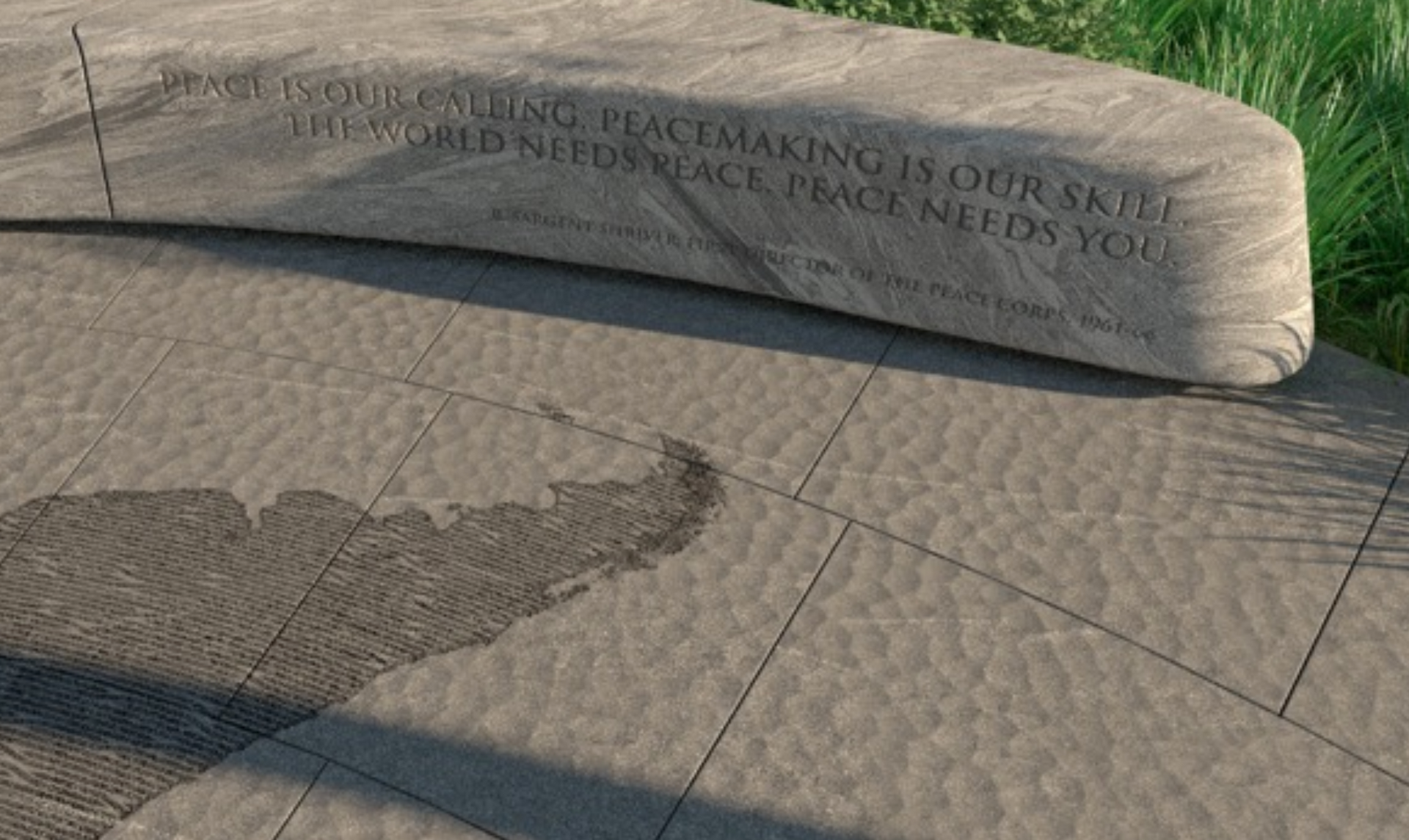
DESIGN SPOTLIGHT
Making Details Beautiful
Peace Corps Park’s design has to meet practical requirements as well as artistic ones – and a perfect example of the care they have taken to do so lies in a small but meaningful refinement of the design to accommodate accessibility requirements.
Whenever a part of a commemorative work like the Park is raised or projecting out from its base, there must be a physical reflection of it on the ground below to ensure that vision-impaired visitors using a cane can navigate the space safely. In the case of Peace Corps Park, that affects the elevated parts of the three granite benches – the hands and fingers – that are raised up off the ground.
The most common way to meet the requirement is to include a raised curb, at least four inches tall, which the Peace Corps Park design team considered in its initial renderings but was never fully satisfied with. They came up with another solution that involved a small metal railing as a more visually appealing way to signal the benches’ footprint, but again found the design lacking.
“We felt it was a trip hazard, and something quite alien to the overall design of the Park,” said our lead designer Larry Kirkland, and so it was back to the drawing board.
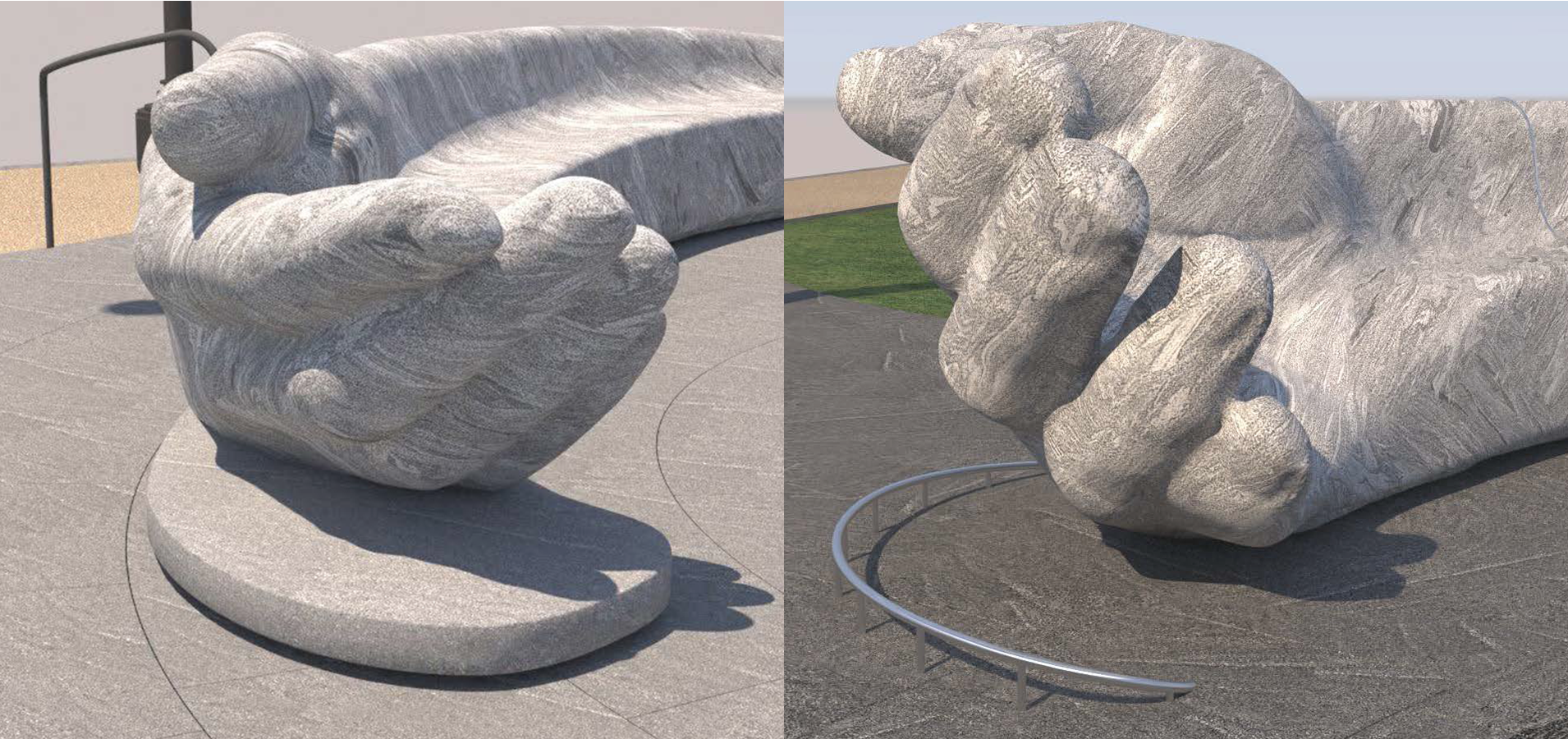
This time, Kirkland and team enlisted the help of an expert in meeting the requirements of the Americans with Disabilities Act (ADA), who explained the less-obvious shortcoming of that design being that it’s clearly an element put there specifically for the visually impaired, rather than something that accomplishes the goal but with a fully integrated design that looks like it belongs there naturally. “That really lit up a lightbulb for us,” Kirkland said.
Collaborating with the team at Michael Vergason Landscape Architects, they devised a solution that is elegant in its simplicity and powerful in its symbolism: A series of ripples in the granite pavers of the world map at the center of the Park, designed to look like they were caused by the benches themselves hitting the surface of the stones representing the world’s oceans.
“It adds a layer of meaning to the design, in that it implies that those ripples will continue to expand and intersect, which is what the Peace Corps is all about: The intersection of cultures and peoples around the world,” Kirkland said.
With the largest of the ripples meeting the four-inch height required for accessibility, this design was a perfect solution, with stakeholders at the National Park Service and U.S. Commission of Fine Arts giving their enthusiastic approval to integrate this feature into Peace Corps Park’s final design.
While it took numerous iterations, this one element serves as an excellent example of the outsize impact that such small details can have on the overall experience of the Park, and is a testament to our design team’s tireless efforts to ensure that all elements work together to create this powerful and lasting symbol. For Larry Kirkland, that has been the goal from the beginning.
“With this solution, there is now no element in the entire park that isn’t part of the meaning and the message. For me as an artist, that’s really really satisfying,” he said.
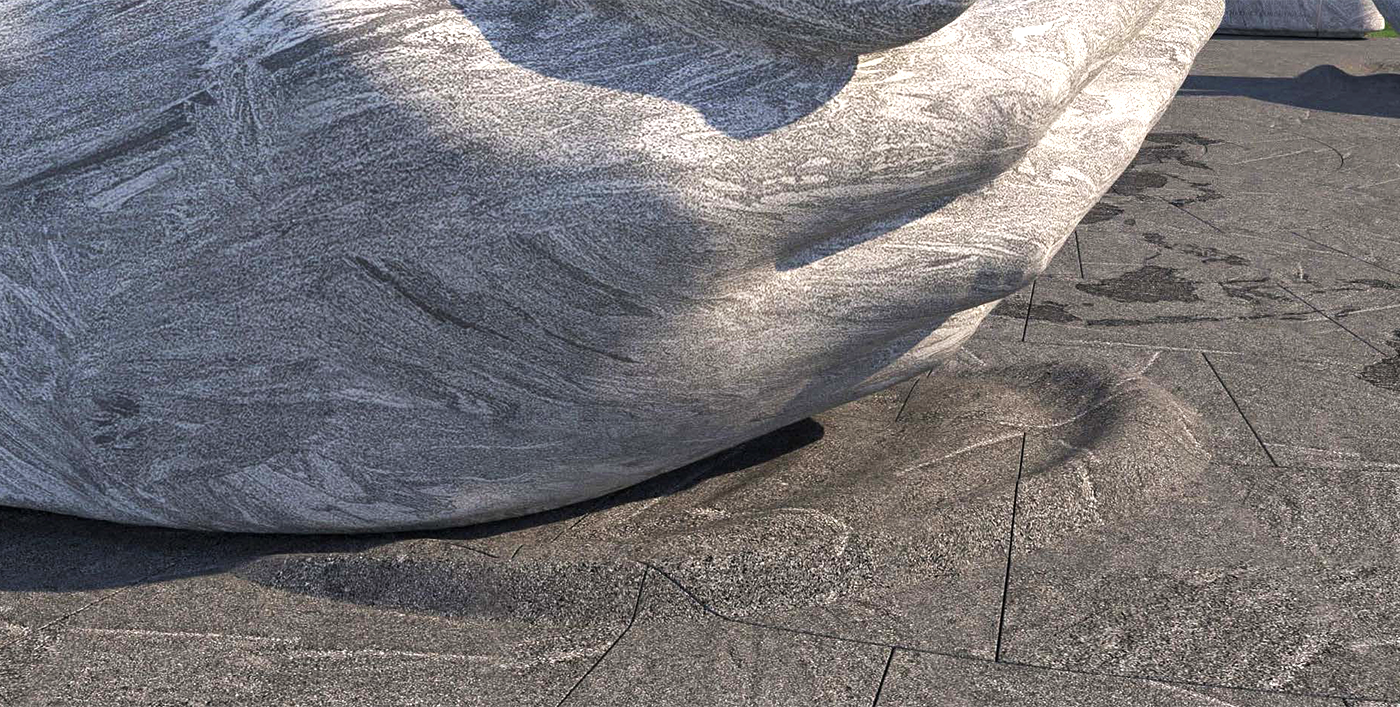
DESIGN SPOTLIGHT
Designing for (Against) Skateboards
A particular challenge that groups like ours face in designing public spaces is not just building for that space’s optimal, intended purpose but to do so while also controlling for the unintended purposes it may be put to. If you are a skateboarder, you already know where this is going. There are skateboarders all over the world, and no matter where they are they make the city their skate park. The aesthetic and athletic value of their sport notwithstanding, skateboards’ metal trucks can wreak havoc on any stone step, curb or public bench they grind on.
The Peace Corps Park design team knows how attractive long, curved stone edges (like those on the granite benches that form the centerpiece of the Park) are to skateboarders, so they reached “across enemy lines” to consult with a skate park designer in Los Angeles and anticipate how skaters might try to use the space.
The resulting analysis shows surfaces for sliding and grinding on all parts of the benches: Inner edges, outer edges–even on the irregular contours of the hands shaped into one end of each bench. The consultants also identified the most likely takeoff routes and acceleration zones, giving Kirkland and team two key problems to solve to ensure the Park’s surfaces aren’t worn away, chipped or discolored by Washington D.C.’s community of street surfers: discourage grinding on the benches and make skating on the granite pavers uncomfortable.
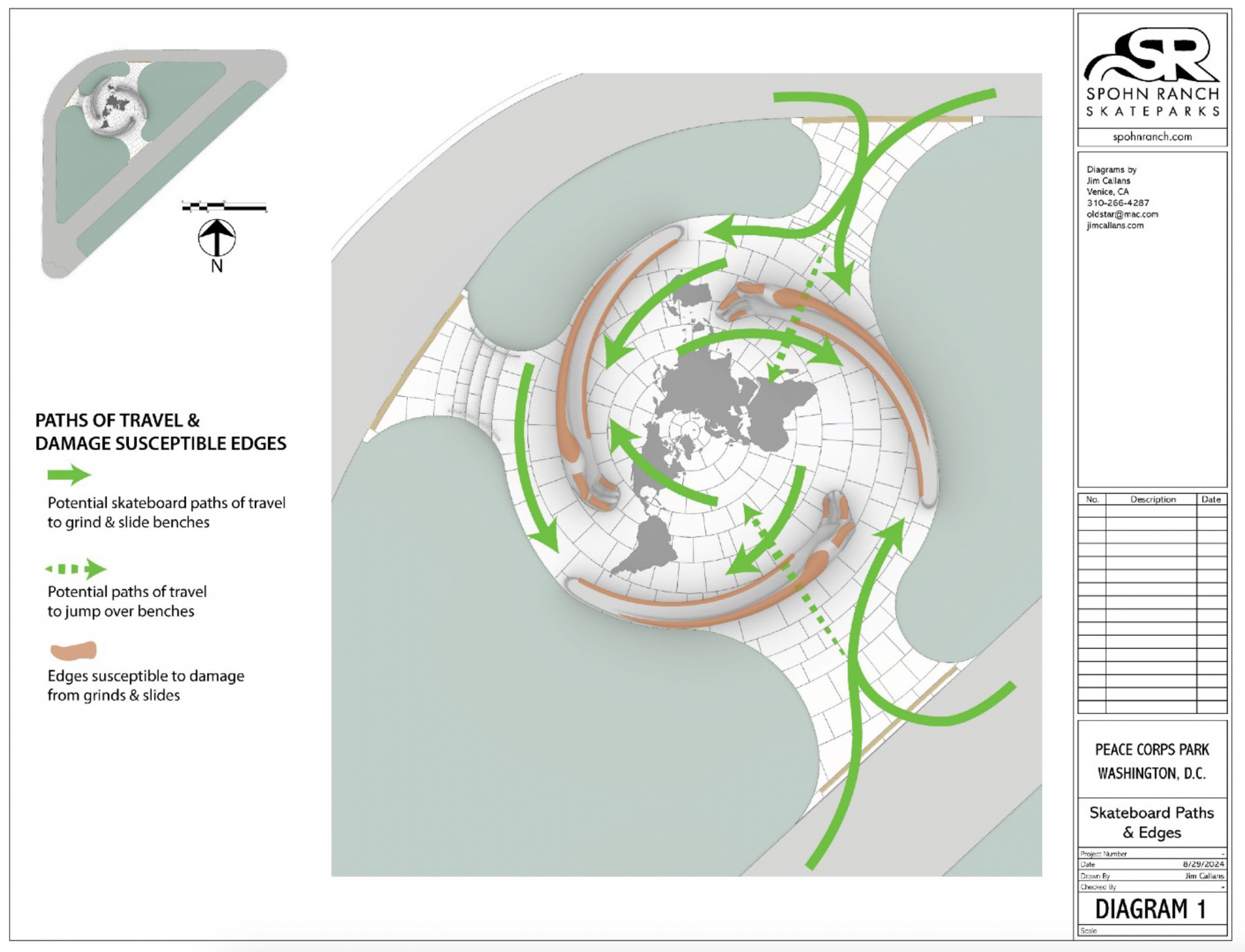
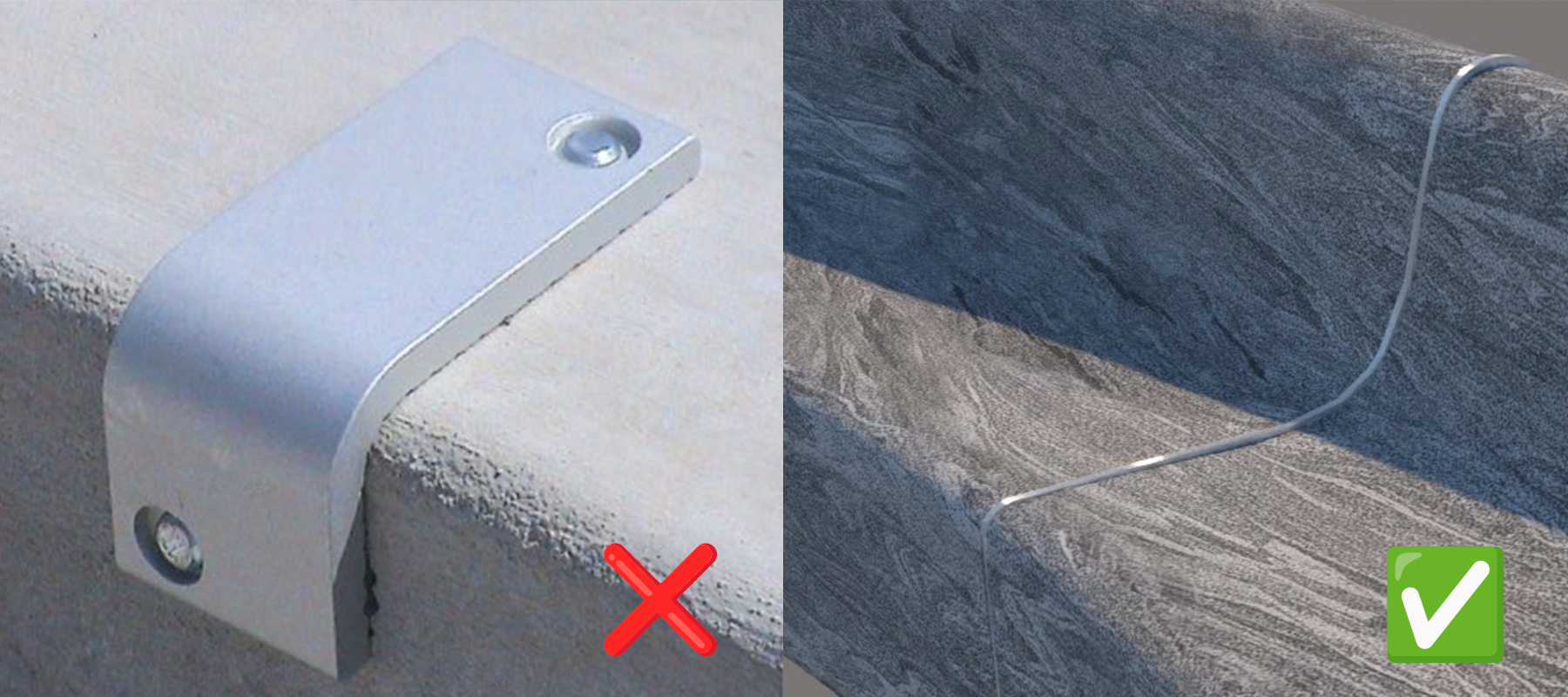
“The simple answer that we all see used in every city was to use some kind of metal stopper to stop the grinding,” Kirkland said, “but we all agreed that there must be a better solution.”
Looking for a way to better integrate the skateboard deterrent into the design of the benches, he sought to take advantage of the fact that each bench will be made from three different blocks of granite and turn the seam between each block into something functional. The result (on the right side of the image below) is a stainless-steel element that protrudes from the bench surface where necessary (the horizontal surfaces) but sits flush on the vertical surfaces that won’t see skateboards.
As for the second problem, the design of the textured pavers in the middle of the site also reflected careful consideration of its effect on skateboarding.
In designing the exact depth and pattern of the texture that will be carved to represent oceans and the continents of the world, the team considered the diameter of wheelchair wheels and skateboard wheels to land on a depth that would impede a skateboard but not a wheelchair.
Once the physical samples of the pavers came into the office, the team took out a skateboard (and a wheelchair) and tested the design in real life before they finalized the design.
Their approach is just one more example of the high standard the Peace Corps Park design team has brought to every element of its vision, insisting that the artistic concept be reflected in every part of the design, and not taking the “easy” solution to a practical problem if that means compromising the symbolic value of the Park.
With this commitment, we know that Peace Corps Park will be integrated into the D.C. landscape and daily life of its people while ensuring it retains its visual appeal to inspire generations to come.
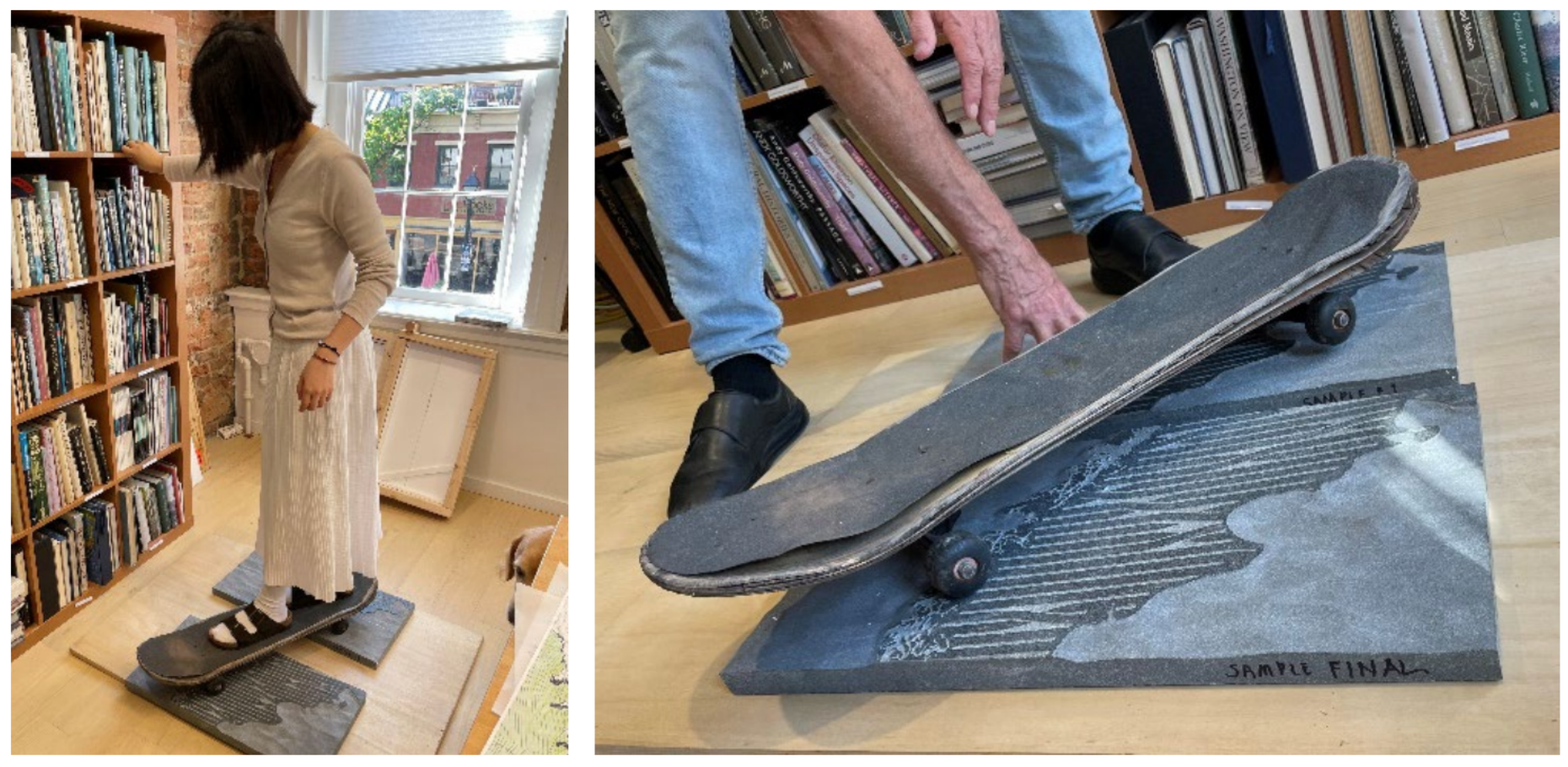
DESIGN SPOTLIGHT
Planting Seeds for the Future
A key design element of Peace Corps Park is the landscaping conceived by Michael Vergason Landscape Architects. The team has designed a welcoming parklike setting to create a contemplative and inspiring space for the Park’s visitors. More than 1,200 trees and plants will live in the space, representing more than 20 species and varieties.
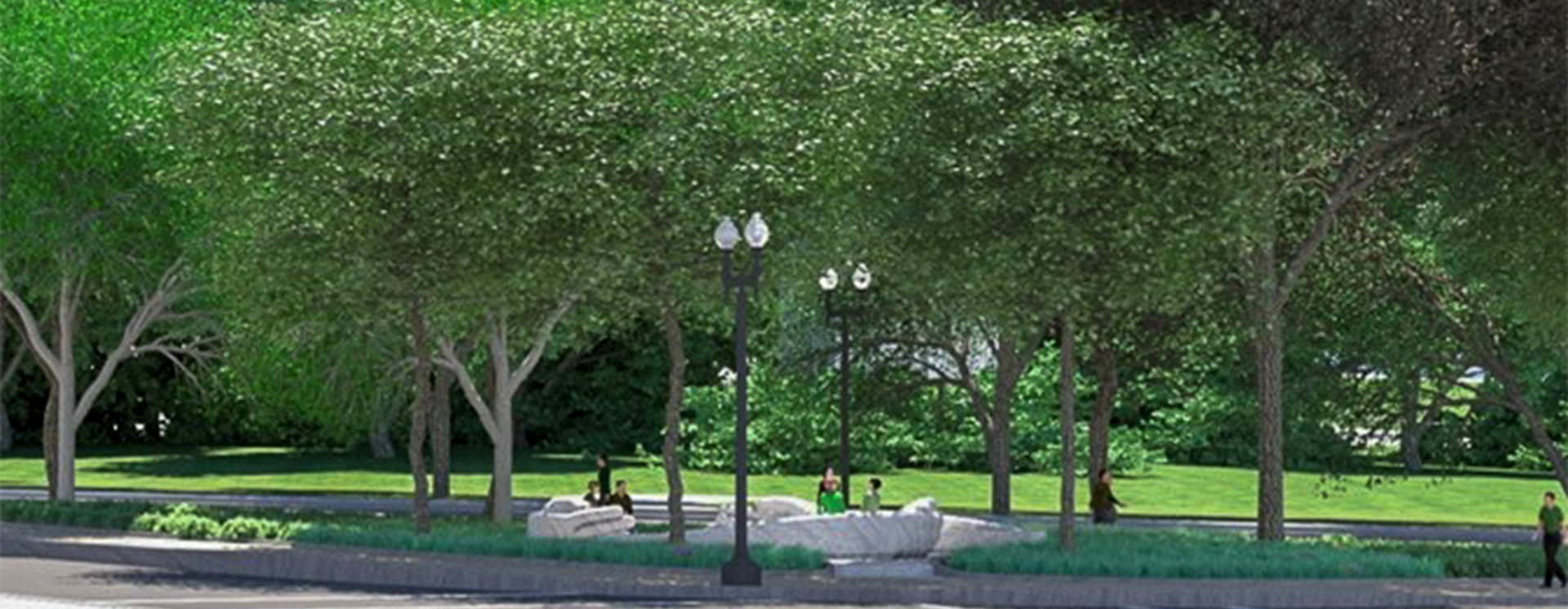
The National Capital Planning Commission asked us to use only native species, which MVLA was able to achieve, with the exception of three species: Prunus laurocerasus ‘Otto Luyken’ Cherry Laurel, Galanthus elwesii Snowdrops, and Scilla siberica Siberian Squill, which were selected for their dependable performance in urban garden settings.
A majority of the plantings are part of two biofiltration basins that will serve as pollinator gardens using native plants such as milkweed, Clethra and Itea that attract and nurture the monarch butterfly and other important species. Many pollinators couldn't be considered because of the National Park Service’s concerns about maintenance, so finding hardy native varieties was especially important.
And, of course, with seasonal plants come leaves and other debris, so the team found a low-maintenance solution in the willow oak, which has long, narrow leaves that scatter easily in the wind.

DESIGN SPOTLIGHT
Inspiration from a Hammer and Chisel
We have talked a lot about the inspirational power of Peace Corps Park, which will remind visitors of the importance of service and global partnership, but nowhere is this mission more directly expressed than in the inscriptions on the benches encircling the Park’s world map.
We’ve shared the text of the quotes themselves – from John F. Kennedy, Sargent Shriver, Ellen Johnson Sirleaf and Nelson Mandela – and this month we’re taking a look at how those inscriptions will come to life in the Silver Cloud granite that will make up the Park’s benches.
That granite, which is quarried in the state of Georgia, is very dense, with low water retention. It’s just the type of granite that master stone carver Nick Benson prefers to work with. “The tighter the grain, the better for me – especially when dealing with a smaller character like we are using,” he says. “The finishing will come out really well with this material.”
Benson is a third-generation stone carver (his father carved the inscriptions for the John F. Kennedy Memorial at Arlington National Cemetery), and the latest owner and creative director of the John Stevens Shop that has been operating in Rhode Island since 1705. He brings his artistic expertise in calligraphy to his physical skill with a hammer and chisel to designs and letterforms that range from the classic to the modern. In 2010, he won a MacArthur “Genius” grant to explore how the digital world affects our perception of beauty, a topic that fascinates him as someone who works primarily in the analog medium of stone and sculpture.
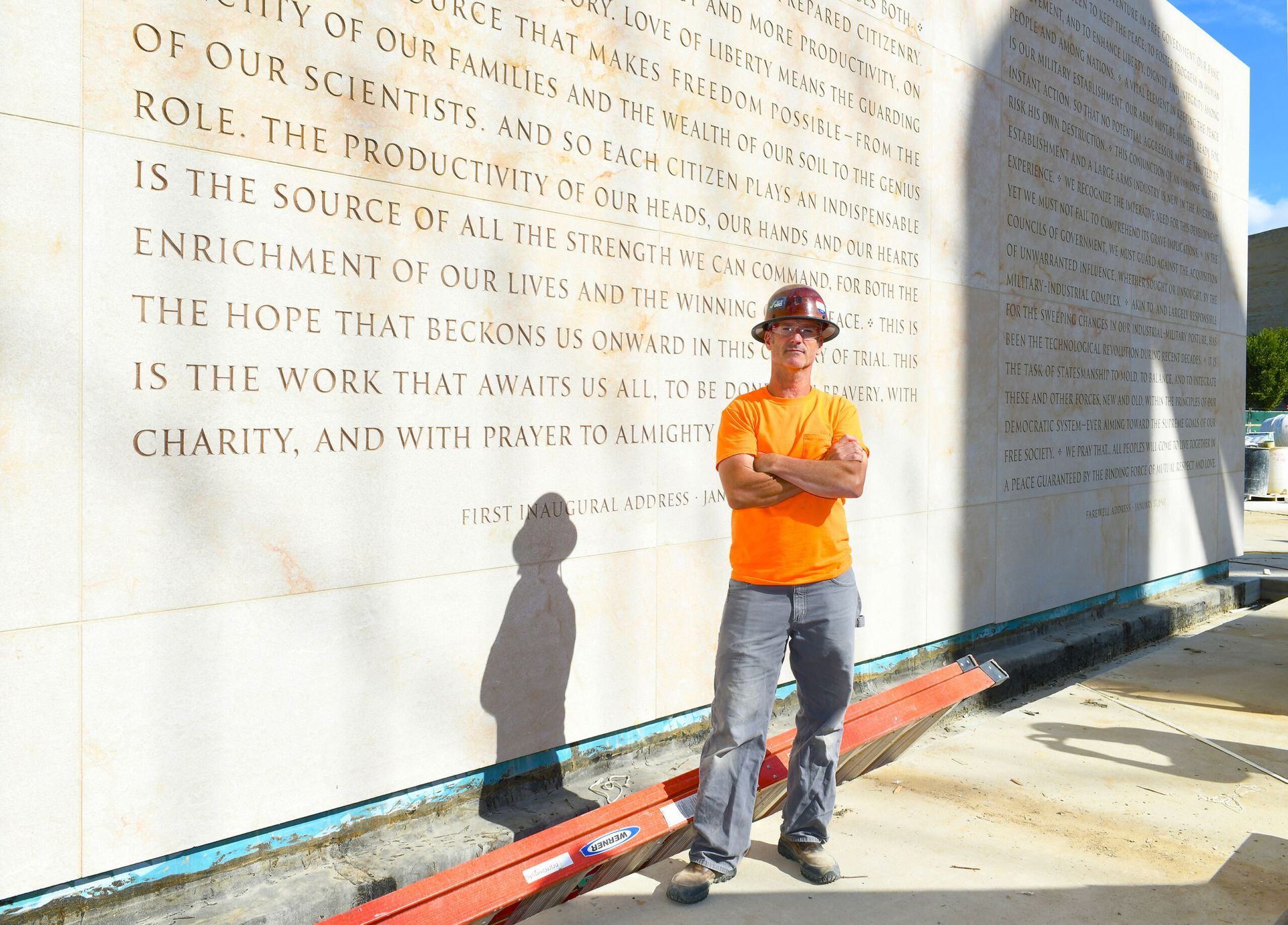
If you have a choice between a machine-made thing and a handmade one, Benson says. “The handmade one is always better: It has inconsistencies, little details that reveal the human hand behind it, and that is what makes it beautiful.”
Indeed, Peace Corps Park’s design team initially explored inscribing the quotes using an automated sandblasting process but they were unsatisfied with the results. In this case, the human hand is superior to the machine, so Benson joined the team.
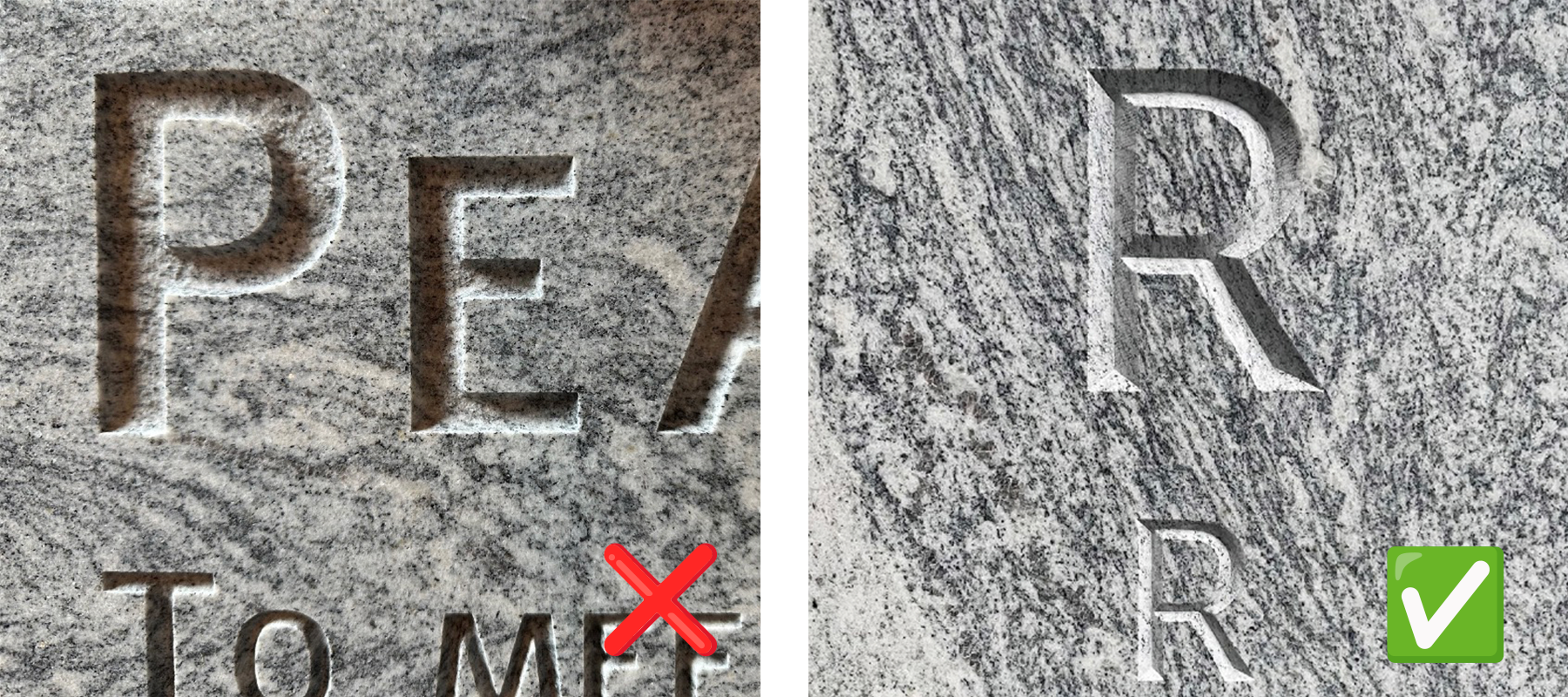
The first task was to choose a font. It would need to be one whose lines are bold enough to show up well in stone, as you lose about 15 percent of the weight that you see on a screen when you carve the letters into granite. He also wanted to use a more modern look, rather than the ancient-Roman style common in other commemorative works of Washington, D.C., so he selected a more contemporary sans-serif font.
“It’s bold but fun, with a little sweep to the stroke that gives it some character,” he said. Benson created the font for the Yale University Art Gallery, and used it for the Four Freedoms Park Memorial on Roosevelt Island in New York.
Benson has also worked on the Eisenhower and MLK memorials, and finds his own inspiration in the words that commemorate such important symbols in American history. “When I’m on site managing a project I often find myself stepping back and seeing one of these inscriptions and it hits you like a sledgehammer,” he says.
Speaking of the quotes that he and his team will carve into the Peace Corps Park benches at the fabrication site in Wisconsin, he adds, “Yes, these ideas were spoken in a specific era and context but they transcend time. That’s what hits so hard: These words are for all time.”
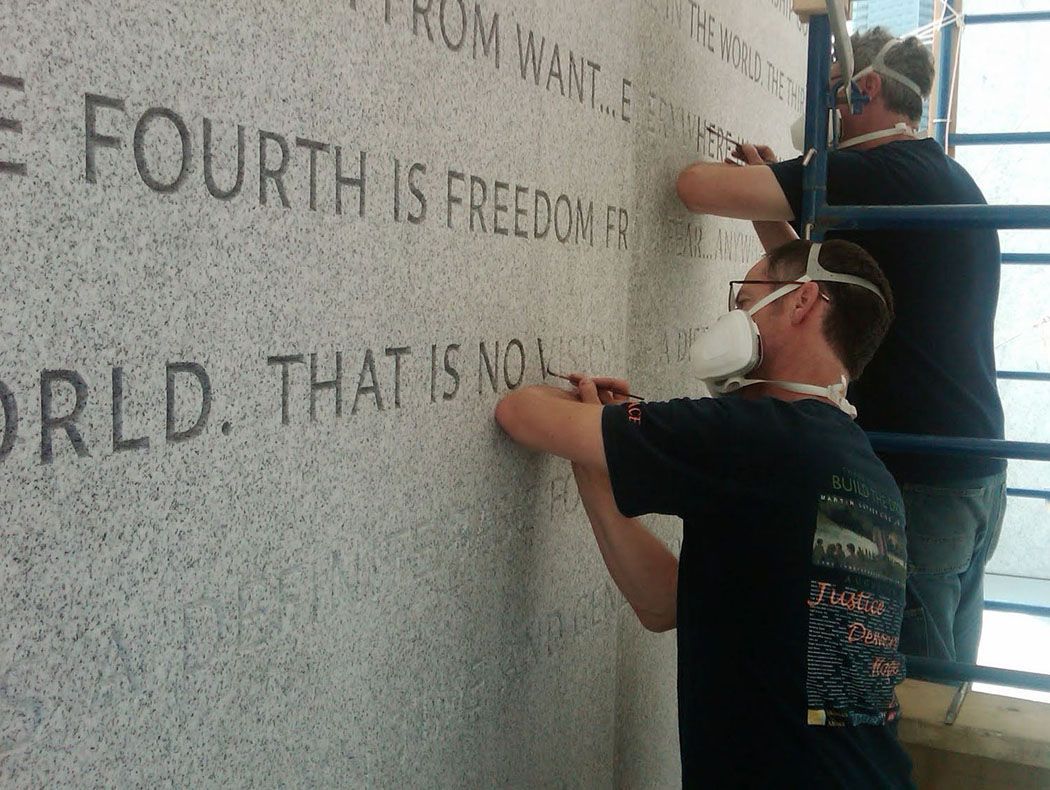
Larry Kirkland Introduces the Peace Corps Park Design Team
The design team for Peace Corps Park comprises talented and highly respected individuals and firms — designers, engineers, and project managers — with whom I have successfully collaborated on previous projects and whose work I deeply admire. The team brings together some of the best and brightest in the business for this vital project, endeavoring to help tell the Peace Corps story as it truly deserves.
A Glimpse into My Background
Born into a military family, frequent relocations shaped my childhood. Art became my solace amidst shifting homes and schools. Unlike my Naval Academy-bound brothers, I ventured to Oregon for higher education, where a remarkable mentor introduced me to the world of art making and the process of design thinking — the genesis of my career.
For over four decades, my focus has centered on commissions to craft enduring artworks. Each of these opportunities involves a community unified by shared concerns. My creative process commences by immersing myself in these communities, comprehending their motivations, and, most importantly, unraveling their aspirations.
Collaboration underpins all my projects. Alongside accomplished artisans, we have successfully realized over 100 art commissions globally: from Iwate University in northern Japan and The Hong Kong Airport Central Station, to The Southwestern Pennsylvania World War II Monument, Randall Children’s Hospital in Portland, Oregon, The World Trade Center in Kuala Lumpur, and Penn Station for New Jersey Transit in New York City.
The Peace Corps Commemorative Foundation
The Peace Corps Commemorative Foundation had a vision to create a commemorative park that would honor the idea that created the Peace Corps – Americans collaborating with global communities to bring about improvements to the lives of others. By transcending boundaries of culture, language and religion, these American volunteers would return to the United States as more informed and compassionate citizens.
The Foundation first embarked on an open design competition in 2015. Close to 200 proposals were reviewed by a jury of respected designers, but no winning concept was chosen. The Foundation then identified and invited a number of landscape architects, architectural firms and sculptors, offering each a stipend, to submit design proposals, but still without success. PCCF President Roger Lewis turned to a colleague, Glen Harper, the editor of Sculpture Magazine, who suggested Larry Kirkland. This led to a face-to-face interview in March 2018.
The process of creating a site-specific art environment that has specific content requires collaboration between the artist and those who desire this work of art. It involves listening to the histories of those passionate about their experiences and conducting research through reading suggested texts. My process strives to integrate me into this community, fostering an instinctive understanding of their aspirations.
At that time, I had completed multi-year efforts for the Disabled Veterans Memorial in Washington, D.C., and the Southwestern Pennsylvania World War II Memorial in Pittsburgh. Immersing myself in the context of war and the devastating realities of human suffering was difficult for me.
When Roger and I discussed the potential for a Peace Corps Park, joy seemed to re-enter my studio after being absent for several years.
Naturally, my interest was piqued!
Meeting the Challenge
Many of my friends and colleagues are Peace Corps alumni. Listening to their experiences initiated the creative process. Roger and the other board members were candid about their volunteer time. Several concepts were developed, discussed, and discarded. Yet, specific aspects of these initial ideas underwent further development.
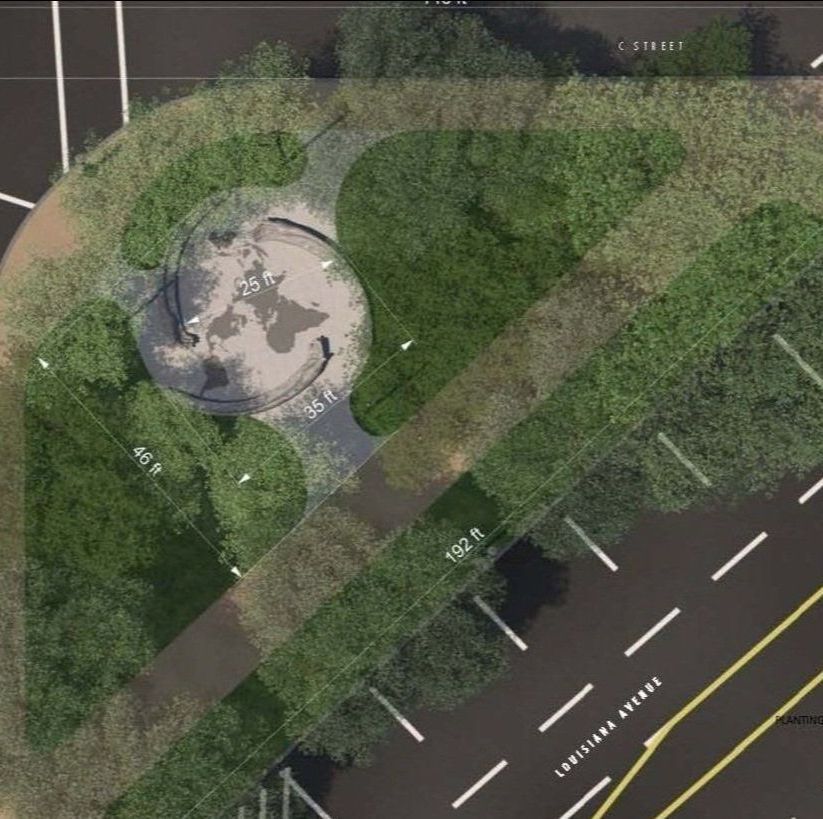
The chosen site presents a challenge — a small triangular parcel amidst the street grid and diagonal boulevards that define the District of Columbia, offered by the National Park Service to the Peace Corps Commemorative Foundation. It is compact, not spacious enough for a basketball court.
The National Park Service, as the sponsor, deemed this piece of land suitable for a modest commemorative area. Despite its constraints, it's been a source of creative fuel, as challenges often are. Each element must carry meaning, and collectively, they must convey the message of reaching out in the service of others. This potent and positive concept should resonate with all who visit this place.
Creating this artwork here is notably intricate, unlike others in my studio practice. The Peace Corps Commemorative Foundation guides this effort, while The National Park Service acts as the ultimate client. This requires Congressional authorization — granted by the Peace Corps Commemorative Works Act of 2014 and extended in 2021. The Architect of the Capitol must approve. The Presidentially appointed Commission of Fine Arts must approve at each step of concept and design development. The National Capital Planning Commission also must approve as does the District of Columbia. All these people have opinions. Like breathing the air in Washington, D.C.
The Dream Team
A decade ago, I was introduced to Michael Vergason Landscape Architects in Alexandria, Virginia, when they had been engaged to create the American Veterans Disabled for Life Memorial (AVDLM) in Washington, D.C. Michael invited me to join their team as the artist. Our collaborative design work not only crafted a compelling visitor experience at the Memorial but also fostered mutual admiration and friendship.
On this team, Jerome Cloud of Cloud Gehshan Associates assumed the role of graphic design expert. The profound expertise and meticulous craftsmanship contributed by Cloud Gehshan played a vital role in shaping the significance of the AVDLM.
When chosen by the Peace Corps Commemorative Foundation for the conceptual design of the future park in Washington, D.C., I approached these two design firms to work with me. This collaboration extends our successful partnership from the AVDLM project.
Michael Vergason, Beata Corcoran, Doug Hays, Jerome Cloud, and Ian Goldberg are valued partners. Inevitably, we converge on the same design decisions. Their contributions span beyond their disciplines as we scrutinize each facet of the project, from initial concepts to intricate design details.
John Grant served as the Director of Public Art for the City of Denver when I was retained as lead artist on the Denver Civic Center Office Building in 2000. John boasts a photography background and once owned a fine art photography gallery.
Following his city tenure, John started Public Art Services, collaborating with artists to create large-scale artworks across the country. His expertise spans municipal engagement, diverse material fabrication, innate grasp of structural and hydraulic engineering, electrical systems and illumination, and adeptness in handling artists' sensitivities.
He stands as the finest project manager I've ever partnered with. Together, we've crafted substantial pieces for The National Center for Civil and Human Rights in Atlanta, The University of Iowa Children’s Hospital in Iowa City, and the iconic Columbia River Pier, including an interactive water feature at Columbia River Waterfront Park in Vancouver, Washington.
Michael Mowry, trained as an architect, wields magical skills in rendering large-scale artworks. Collaborating with John Grant and a dozen or more artists, he transforms conceptual ideas into meticulously constructed visual elements. We often explore ideas, discarding them to venture in new directions, akin to a painter wielding dual brushes. Michael, John, and I share a profound mutual respect.
Martin and Martin Engineers, my structural engineers since the 1990s, have been steadfast. From founding partner Charles Keyes to now President Shane McCormick and the skilled Michelle Black, I entrust the design's structural integrity to their expertise.
The team working on creating Peace Corps Park is a dream team. We respect each other and trust in the design decisions each of us make. I trust all of them and find we do our best work when thinking together. They are talented and hard-working creative individuals. Together building significant and memorable spaces that invite the public to reflect on the world we strive for in the future.
LARRY KIRKLAND
Sculpture & Plaza Artwork
Mowry Studio
Digital Renderings
Martin and Martin
Structural Engineering
SGF Scultura
Stonework
Cloud Gehshan
Environmental Graphics
MICHAEL VERGASON LANDSCAPE ARCHITECTS, LTD
Site Planning & Landscaping
About Michael Vergason Landscape Architects, Ltd
Wiles Mensch
Civil Engineering
CM Cling
Lighting
AECOM
Environmental Analysis & Section 106
Historic Preservation Consultant

